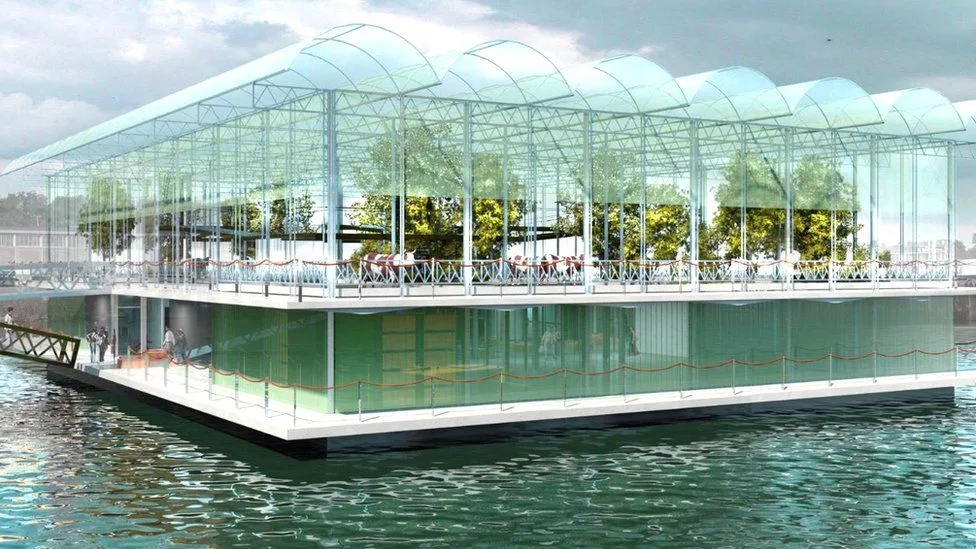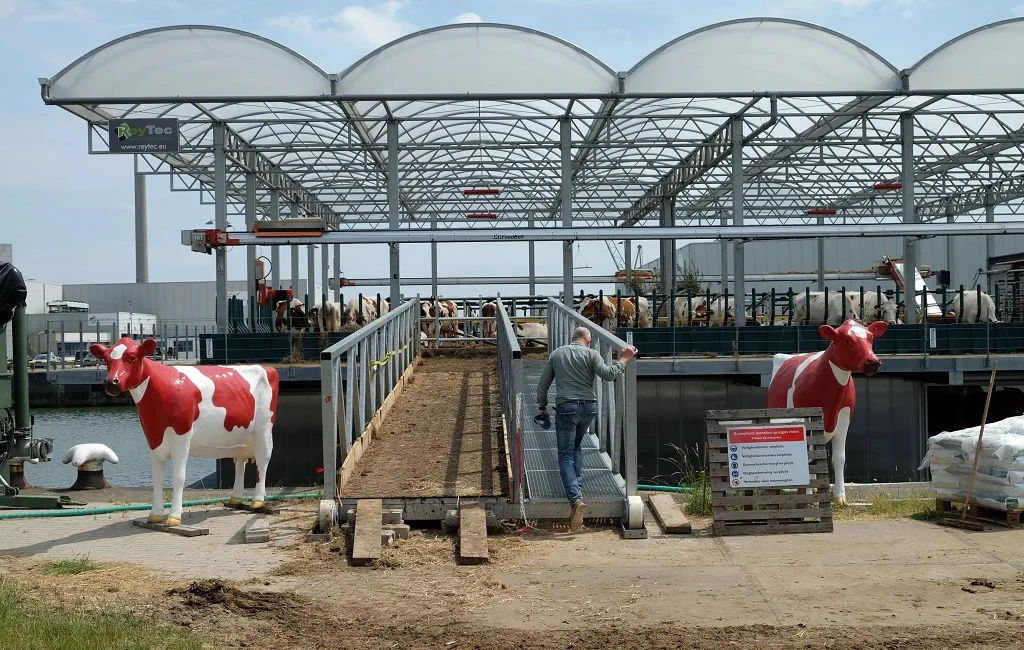
Floating Farms: A Comprehensive Technology Review
Floating farms are an innovative solution to the growing challenges in agriculture, particularly in areas prone to flooding or with limited arable land. This technology, which involves the use of floating platforms to cultivate crops, has gained significant attention in recent years. The concept is not entirely new, but its application has expanded and evolved, offering a promising avenue for sustainable agriculture. In this article, we will explore the different types of floating farm technology, its mechanisms, the problems it aims to solve, and its potential applications.
What Type of Technology Is It and When Did It Become Popular?
Floating farm technology falls under the category of aquaponics and hydroponics systems, which are combined with floating structures. This method has been popularized in regions where traditional farming is challenged by environmental constraints. The modern concept of floating farms began gaining traction around the early 2000s, particularly in the Netherlands, a country known for its innovative solutions to land and water management. The combination of advanced hydroponic techniques with floating platforms has created a unique system that allows for year-round production of vegetables and other crops.
The adoption of floating farms has been driven by the increasing demand for food production in urban areas, where space is limited and traditional farming methods are impractical. This technology offers a viable solution by utilizing water bodies for agriculture, thereby conserving land and reducing the environmental impact of food production.
How Does It Work?
Floating farms operate on the principle of hydroponics, where plants are grown in nutrient-rich water rather than soil. The floating platforms are equipped with systems that provide plants with the necessary nutrients, water, and oxygen. These platforms can be anchored in lakes, rivers, or coastal areas, allowing them to move with the tides and currents. The use of renewable energy sources, such as solar panels, to power the systems makes floating farms an environmentally friendly option.
The plants are typically grown in containers or beds filled with an inert growing medium, which supports the roots and helps retain moisture. Water is pumped from the surrounding water body, filtered, and enriched with nutrients before being supplied to the plants. The excess water is then returned to the water body, minimizing waste and ensuring a continuous supply of nutrients. This closed-loop system not only conserves water but also prevents contamination of the surrounding environment.
What Problems Is It Designed to Solve?
Floating farms address several critical issues in modern agriculture, including land scarcity, water scarcity, and climate change. In densely populated urban areas, there is often limited space available for traditional farming. Floating farms utilize otherwise unused water surfaces, thus expanding the available area for agriculture without competing for land resources. This is particularly beneficial in cities where urban sprawl has consumed most of the arable land.
Water scarcity is another pressing issue, especially in regions with limited freshwater resources. Floating farms can operate on saline or brackish water, reducing the reliance on freshwater supplies. Moreover, the closed-loop hydroponic system is highly water-efficient, using up to 90% less water than traditional soil-based agriculture. This makes floating farms an ideal solution for arid regions or areas experiencing drought conditions.
Climate change poses significant risks to traditional farming practices, including increased flooding, unpredictable weather patterns, and rising sea levels. Floating farms are resilient to these challenges as they can adapt to changing water levels and can be relocated if necessary. This adaptability makes them a promising option for coastal and flood-prone regions.
How It Solves These Problems
Floating farms provide a versatile solution to land scarcity by utilizing water surfaces that are otherwise unproductive. This approach not only increases the amount of available space for agriculture but also allows for the integration of farming into urban environments. By bringing food production closer to consumers, floating farms can reduce the carbon footprint associated with food transportation.
The use of hydroponics in floating farms ensures efficient water use, which is crucial in areas facing water shortages. The nutrient-rich water recirculation system maximizes the use of water and nutrients, reducing waste and environmental impact. Additionally, the ability to use non-traditional water sources, such as brackish or saline water, further conserves freshwater resources.
The design of floating farms also provides a solution to the challenges posed by climate change. These farms can be constructed in modular units, allowing for easy expansion or relocation as needed. The buoyant nature of the platforms ensures that they remain above water even during floods, making them a reliable option in flood-prone areas. Furthermore, the integration of renewable energy sources, such as solar panels, enhances the sustainability of floating farms.
In terms of crop protection, floating farms can be equipped with protective structures such as greenhouses or shade nets, which shield the crops from extreme weather conditions. This controlled environment not only ensures a stable growing climate but also protects the plants from pests and diseases, reducing the need for chemical pesticides.

Where Else Can It Be Applied?
The concept of floating farms can be extended to other areas beyond traditional agriculture. For instance, aquaculture, or the farming of fish and other aquatic organisms, can be integrated with floating farms to create a multi-functional food production system. This integration, known as aquaponics, utilizes the waste produced by fish as a nutrient source for plants, while the plants help purify the water for the fish. This symbiotic relationship enhances the efficiency and sustainability of both systems.
Floating farms can also be applied in the cultivation of high-value crops, such as herbs and medicinal plants, which require specific growing conditions. The controlled environment of floating farms allows for the precise regulation of factors such as light, temperature, and humidity, ensuring optimal growth conditions for these crops.
In addition to food production, floating farms can be used for educational and research purposes. They provide a unique opportunity to study the interactions between plants, water, and the environment, offering valuable insights into sustainable agriculture practices. Educational institutions and research centers can utilize floating farms as living laboratories to train students and researchers in innovative farming techniques.
How Promising Is This Technology?
Floating farm technology holds significant promise for the future of agriculture, particularly in the face of growing global challenges such as climate change, urbanization, and resource scarcity. The technology’s ability to utilize non-arable spaces and its water-efficient nature make it a viable solution for urban and arid regions. Furthermore, the integration of renewable energy sources and the potential for expansion into aquaculture and other sectors enhance its appeal.
The scalability of floating farms is another factor contributing to their potential. As technology and infrastructure improve, the cost of setting up and maintaining floating farms is expected to decrease, making them accessible to a wider range of users, from individual urban farmers to large-scale agricultural enterprises. The modular design of floating farms also allows for gradual expansion, enabling users to start small and scale up as needed.
However, there are challenges to be addressed, including the initial cost of setting up floating farms, the need for specialized knowledge and equipment, and potential environmental concerns related to the use of water bodies. Nonetheless, with continued research and development, floating farm technology is poised to become a key component of sustainable agriculture in the 21st century.
